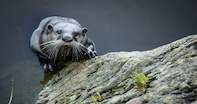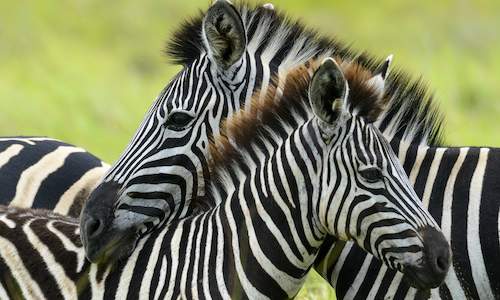
Name:
Cape otter (aonyx capensi)Appearance
The Cape clawless otter is about 1.3 m in length and weighs up to 13 kg. Its dense fur is a dark brown in colour, apart from the belly, cheeks and upper lip which are white.
They have thick and rather short tails. Having 5 clawless digits on each foot, the hind feet are webbed in half its length whereas the toes of the front feet are unwebbed.
Cape Otter Diet
Feeding predominantly on crabs, the Cape otter also eats fish, insects, birds, reptiles, molluscs, lobsters, frogs and small mammals.Cape Otter Breeding
After a gestation period of 60 to 65 days, one to three young are born per litter. Having no specific breeding season, this animal breeds throughout the year in South Africa.Cape Otter Behaviour
The Cape otter is solitary and very elusive in the wild. Young stay with their mothers, living in groups of up to eight. The males do not associate with the females and are not involved in rearing the young. Being intelligent and playful animals, the Cape otter is pleasant to observe.Cape Otter Habitat
Living in freshwater sources as well as the sea, this animal requires freshwater to wash the salt from its thick fur.Where they are found
The Cape clawless otter inhabits the areas of higher rainfall on the eastern coastline of South Africa. It is an uncommon animal, and entirely absent from the drier and arid regions of the country.
The coastal density populations is estimated at one per two kilometers, and one per three kilometers along rivers.
 Learning about the mammals of South Africa is now so much easier for all South Africans - SouthAfrica.co.za is an excellent source of inform...
Learning about the mammals of South Africa is now so much easier for all South Africans - SouthAfrica.co.za is an excellent source of inform...